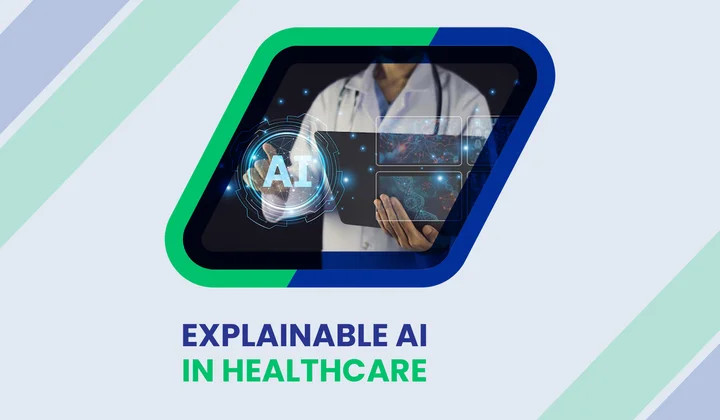Remember the days when booking a doctor’s appointment meant waiting on hold, filling out endless forms, and driving across town?
Those days are quickly fading.
Today, over 74% of healthcare providers offer some form of telehealth, and patients are increasingly using connected devices to track vital signs, manage chronic conditions, and stay on top of their wellness.
At the same time, AI is helping doctors make faster, more accurate diagnoses, while wearable devices and IoT tools deliver real-time health updates. Mental health support is now just a click away, breaking down barriers like travel, long wait times, and stigma.
Therefore, these innovations are tackling fundamental challenges in healthcare, including limited access, long wait times, and fragmented patient data.
In this blog, we’ll explore 7 Telemedicine Trends for 2026, showing how technology is making healthcare faster, more connected, and truly patient-friendly.
What Does Telemedicine Look Like in 2026?
Telemedicine in 2026 looks nothing like the quick video calls we once knew. It’s faster, wiser, and far more personal. Patients can now book appointments, consult doctors, and receive prescriptions, all within minutes.
Healthcare teams are using AI to support faster, more accurate diagnoses, saving time and effort.
Table of Contents
However, wearable devices are also changing how people manage their health. Smartwatches and remote monitors share real-time updates with doctors, helping them spot potential issues before they grow serious.
In addition, A prediction indicates that telemedicine could reach $340 billion in the global digital health market by 2026, underscoring its central role in modern care.
Simply put, the future of telemedicine feels more connected, more convenient, and more human.

Trend 1: AI-Powered Diagnostics and Virtual Assistants
Healthcare in 2026 is becoming smarter, thanks to AI-driven diagnostics that help doctors make faster, more accurate decisions. These tools can scan medical images, detect diseases early, and even flag potential errors that might otherwise go unnoticed.
Moreover, the AI market in healthcare is expected to reach $148.4 billion by 2029, growing at a 40% CAGR, indicating rapid industry-wide adoption of intelligent solutions.
Meanwhile, virtual assistants are transforming how patients interact with healthcare providers. Instead of long hold times or multiple forms, patients can now use tools like:
- Google Assistant (Healthcare Mode): appointment reminders and basic health queries
- Amazon Alexa for Healthcare: medication reminders and symptom checks
- IBM Watson Assistant: automating hospital and clinic interactions
- Microsoft Health Bot: scheduling and real-time patient support
Together, AI diagnostics and virtual assistants are making telemedicine in 2026 faster, more accurate, and easier to access.
Trend 2: Expansion of Remote Patient Monitoring
Remote Patient Monitoring (RPM) telemedicine is quickly becoming part of everyday care in 2026. With connected devices, doctors can now monitor patients’ health without them even leaving home.
It’s convenient for patients and gives healthcare teams real-time data to act faster. Today, patients are using tools, such as:
- Smartwatches to monitor heart rate and oxygen levels
- Glucose monitors for better diabetes control.
- Wearable ECG sensors that spot irregular heartbeats
- Smart blood pressure cuffs for round-the-clock tracking
These devices are making healthcare more proactive and less hospital-dependent. Instead of waiting for symptoms to worsen, doctors can now step in early, improving care, comfort, and peace of mind.
Trend 3: Integration with Wearables and IoT Devices
In 2026, healthcare is becoming truly connected, with IoT-powered wearables at its heart. These devices are helping doctors monitor patients’ health in real time while giving people more control over their well-being.
The global healthcare IoT market is expected to reach $446.5 billion by 2028, driven by the growing adoption of intelligent sensors and connected devices.
Wearables and IoT devices are transforming healthcare, from monitoring chronic conditions to tracking daily activities. Some of the most popular ones include:
- Apple Watch Series 9: tracks ECG, oxygen levels, and heart rate.
- Fitbit Sense 2: monitors stress, sleep, and overall wellness
- Garmin Venu 3: helps track fitness recovery and heart rate trends
- Omron HeartGuide: a wearable blood pressure monitor
- Withings ScanWatch: combines ECG, sleep tracking, and activity data
These devices seamlessly connect to telemedicine platforms. It allows healthcare providers to access live data and deliver more personalized care. Patients, on the other hand, feel more involved in their health journey, seeing their own numbers and progress daily.
With this integration, digital health trends in 2026 point toward a more connected, data-driven, and prevention-focused care model.
Trend 4: Growth of Mental Health Teletherapy
In 2026, mental health support is becoming more accessible and flexible than ever. Mental Health Software Development services are making it possible for patients to connect with licensed therapists from anywhere, removing barriers such as travel, wait times, and stigma.
However, teletherapy helps patients connect with licensed therapists from anywhere, removing barriers such as travel, wait times, and stigma. Video calls, chat sessions, and app-based check-ins make therapy convenient while maintaining privacy and security.
Popular tools and platforms making this possible are:
- BetterHelp: online therapy sessions and messaging support
- Talkspace: flexible therapy plans and real-time chats
- 7 Cups: emotional support via trained listeners and licensed therapists
- Amwell: integrated mental health services alongside general telemedicine
These platforms show how telemedicine technological advances are transforming mental wellness
Mental health care is moving from reactive to proactive, helping patients manage stress, anxiety, and depression more effectively, anytime, anywhere.
With over 60% of patients now open to using mobile tools for mental-health support. It’s an ideal time to build your platform.
Trend 5: Telemedicine for Rural and Underserved Communities
Telemedicine is bridging the healthcare gap for rural and underserved communities in 2026. Patients who once traveled for hours for basic care can now consult doctors, get prescriptions, and access follow-up support from home. This reduces travel costs and wait times and improves timely access to care.
However, the telehealth adoption in rural areas has grown steadily, with many regions seeing a 40% increase in virtual visits over the past few years.
The following solutions make this possible:
- Teladoc Health: general and specialty care remotely
- MDLIVE: urgent care and behavioral health support
- Doctor on Demand: on-demand virtual consultations for chronic and acute conditions
- Project ECHO: connecting rural providers with specialists for complex cases
Telemedicine ensures that quality healthcare is no longer geographically limited by allowing for remote consultations and monitoring. Patients in remote areas now have better access, and healthcare providers can deliver care more efficiently and equitably.
Trend 6: Advancements in Data Security and Compliance
As telemedicine grows, protecting patient data and staying compliant with regulations has never been more critical. In 2026, healthcare providers are investing heavily in advanced security solutions to ensure sensitive information remains safe while maintaining smooth digital experiences for patients.
The main technologies and practices driving this trend include:
- End-to-End Encryption: securing video consultations, messages, and patient records
- HIPAA-Compliant Cloud Solutions: storing and sharing patient data safely
- AI-Powered Threat Detection: identifying and stopping potential breaches in real-time
With these advancements, telemedicine platforms can offer secure, trustworthy care while meeting strict regulatory requirements. Patients feel safer sharing their health information, and providers can focus on delivering quality care without worrying about data risks.
Trend 7: Evolving Reimbursement Models and Regulations
Changes in reimbursement policies and healthcare regulations are supporting telemedicine’s growth in 2026.
More insurers and governments are expanding coverage for virtual visits, making it financially feasible for patients and providers alike. This shift ensures telemedicine is sustainable.
However, over 70% of healthcare providers now receive reimbursement for virtual consultations, up from less than 30% in 2020, signaling a significant policy shift.
Major changes shaping this trend include:
- Expanded Insurance Coverage: payers covering telehealth visits for primary care, mental health, and chronic conditions
- Parity Laws: ensuring virtual care is reimbursed at similar rates to in-person visits
- Cross-State Licensure Agreements: allowing providers to treat patients across state lines
- Standardized Billing Codes: simplifying claims for telemedicine services
These evolving models are making virtual care more accessible and economically viable, encouraging wider adoption and long-term integration of telemedicine into everyday healthcare.
Frequently Asked Questions (FAQs)
2. How is AI Impacting the Future of Telemedicine?
AI enables faster, more accurate diagnoses, helps detect diseases early, and powers virtual assistants to support patients. It’s one of the telehealth growth drivers transforming healthcare in 2026.
3. What Is Remote Patient Monitoring Telemedicine?
Remote patient monitoring telemedicine allows doctors to track patient health using smart devices like wearables, glucose monitors, and ECG sensors. This trend helps provide proactive care and reduces hospital visits.
4. How is Telemedicine Improving Mental Health Care?
Telemedicine, supported by Mental Health Software Development services, improves mental health care by:
- Video calls with licensed therapists
- Chat and app-based support for flexibility
- Secure and private sessions
- Proactive care for stress, anxiety, and depression
5. Is Telemedicine Secure and Reimbursed by Insurers?
Yes. Telemedicine platforms use encryption, multi-factor authentication, and HIPAA-compliant cloud solutions to ensure security. Over 70% of providers now receive reimbursement for virtual visits, making care accessible and economically sustainable.
Final Takeaways: How is Telemedicine Shaping the Future of Healthcare?
Telemedicine in 2026 is redefining how healthcare works. Beyond video consultations, AI-powered tools help doctors detect issues earlier, wearables deliver real-time health insights, and mental health support is available instantly. Together, these innovations address long-standing challenges such as limited access, long wait times, and disorganized patient data.
At the same time, creating a natural healthcare experience can feel complicated. For this reason, a trusted telemedicine development service makes a big difference. It allows healthcare providers to offer patient-friendly apps, connect devices, and add innovative AI features, making the whole process smoother and more effective.
Ultimately, the future of telemedicine is about better access, less stress, and smarter care, supported by continuous telemedicine innovation in 2026 and reliable telehealth growth drivers that keep improving how the world experiences healthcare.
As technology advances, partnering with the right healthcare development experts ensures healthcare remains connected, compassionate, and truly future-ready.
Want to build an industry-leading telemedicine app that reduces hospital visits by 30% and improves patient engagement by 50%?








Share your thoughts about this blog!